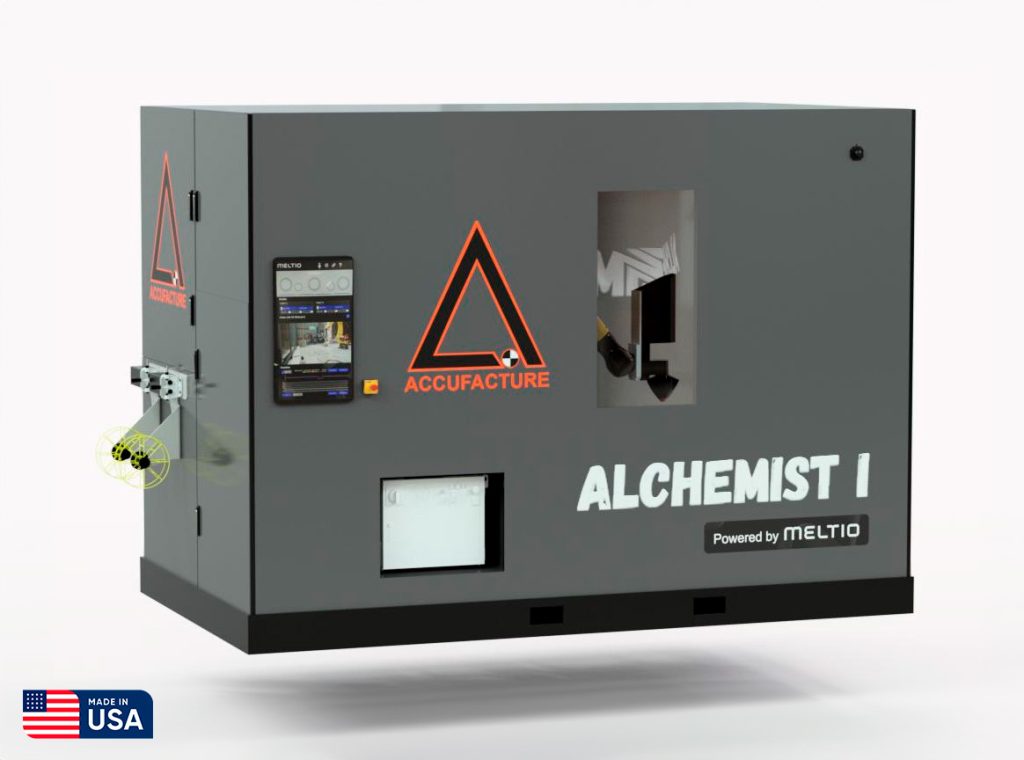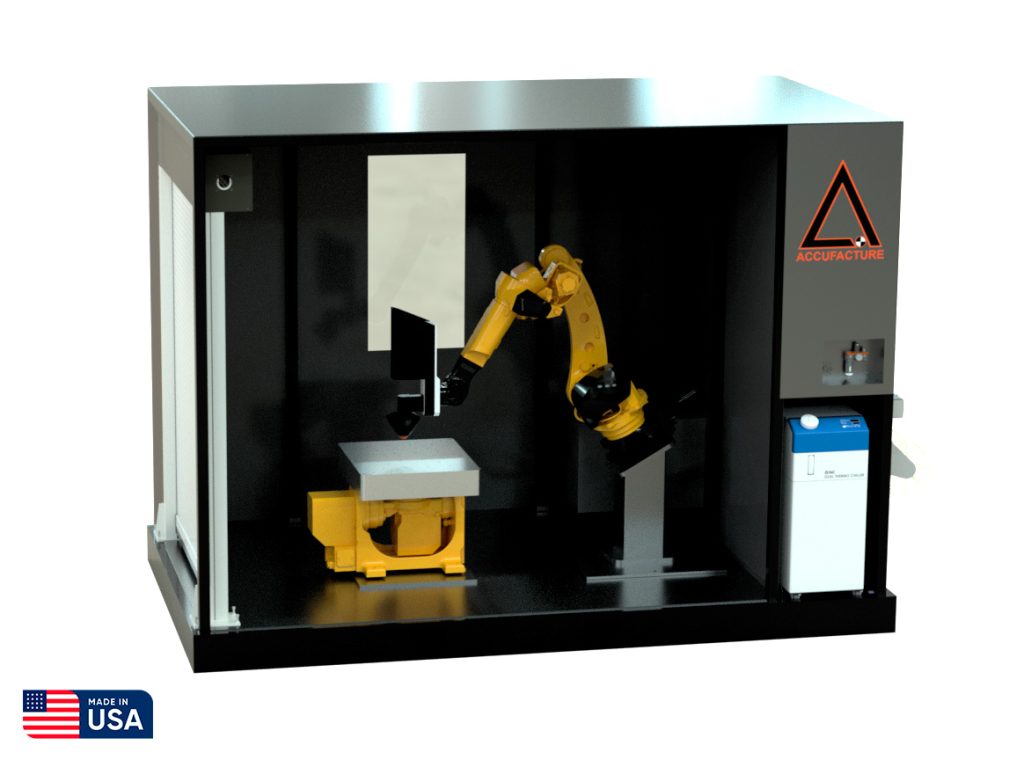Metal 3D printer developer Meltio and Michigan-based industrial automation firm Accufacture have introduced the Alchemist 1, a new large-scale robotic DED 3D printing workcell made in the USA.
Powered by Meltio’s laser metal deposition (LMD) 3D printing technology, Alchemist 1 is optimized for the production of large-scale, fully-dense metal parts. The robotic additive manufacturing workcell is also designed to be easily integrated into existing production lines.
Developed in partnership with robotics firm FANUC America, the Alchemist 1 is targeted to applications in industrial verticals including automotive, aerospace, mining, oil and gas. The system combines Meltio’s laser-wire directed energy deposition (LW-DED) 3D print head with a FANUC six-axis robot and two-axis positioner. These components are located inside a laser-safe enclosure.
The launch of Alchemist 1 follows the news last year that Accufacture had joined Meltio’s sales network, intending to boost the Spanish company’s presence within the United States. The new metal 3D printing cell will be manufactured and distributed within the USA. This aligns with the US Government’s ongoing efforts to re-shore manufacturing capabilities, amid threats to global supply chains and an increased emphasis on environmental sustainability.
“We are thrilled to deepen our collaboration with Accufacture through the introduction of Alchemist 1,” commented Alejandro Nieto, Meltio Engine Product Manager. “This solution not only caters to the needs of North American customers but also underscores our shared commitment to efficiency and simplicity in metal additive manufacturing.”

Alchemist 1: a new Large-scale metal 3D printing cell
Offering a deposition rate of 1 kg an hour, the Alchemist 1 features a substantial build volume of 3.2’ x 6.5’ x 3.2’, or 66.56 cubic feet in total. The system is compatible with inexpensive metal wire, allowing for the cost-effective production of large-scale metal parts possessing density levels of 99.998%.
While exact material compatibility for the Alchemist 1 has not been disclosed, Meltio’s 3D printheads can be used with a wide range of feedstock. These include stainless steel, carbon steel, nickel alloys, titanium alloys, and copper alloys.
The new metal 3D printing cell also incorporates the Meltio Space robotic slicer. Launched last year, this toolpath generator software allows users to control planar, non-planar, and variable extrusion toolpaths. The slicer also features 2-axis workpiece positioner interpolation, kinematics simulation, collisions check, and cell configuration.
Designed with ease of use in mind, Meltio claims that its software removes complexity from the 3D printing workflow, increasing the accessibility of its LMD technology. While a license for Meltio’s slicer comes free with each Alchemist 1, the 3D printer is compatible with other, third-party softwares.
“The DED print quality coupled with the FANUC Robot motion allows for Accufacture to combine the best of both companies’ technologies into a complete Class 1 laser package,” added Michael Sharpe, Executive Director of Sales for Materials Joining at FANUC America.
“The Alchemist 1 solution simplifies 3D LW-DED printing so customers can concentrate on production.”

DED 3D printers hit the market
Alchemist 1 is the latest laser DED 3D printer to hit the market. Earlier this month, Japanese multinational Nikon launched its new Lasermeister LM300A DED 3D printer. This system is designed to work in conjunction with the company’s new Lasermeister SB100 3D scanner to repair metal parts such as turbine blades.
According to Nikon, its new DED 3D printer can reduce lead times by up to 65%, and minimize post-processing requirements. The SB300A compares the shape of the damaged metal component to an optimized CAD model. Toolpath data is then generated for the repair process, which is sent to the LM300A. The DED 3D printer then melts metal wire feedstock directly onto the surface of the part, repairing it.
Elsewhere, Formnext 2023 saw the launch of the Hybrid 3 from US-based metal 3D printer manufacturer Additec. This system combines a laser-directed energy deposition (LDED) 3D printhead with liquid metal jetting (LMJ) and CNC capabilities into a single platform.
Compatible with iron, nickel, aluminum, and copper alloy materials, the Hybrid 3 is primarily targeted towards the production of metal parts for automotive applications. The LDED 3D printhead employs a 6kW fiber laser with a 1080 nm wavelength, and can reportedly achieve deposition rates of up to 4 kg/hr.
Want to help select the winners of the 2024 3D Printing Industry Awards? Join the Expert Committee today.
What does the future of 3D printing hold?
What near-term 3D printing trends have been highlighted by industry experts?
Subscribe to the 3D Printing Industry newsletter to keep up to date with the latest 3D printing news.
You can also follow us on Twitter, like our Facebook page, and subscribe to the 3D Printing Industry Youtube channel to access more exclusive content.
Featured image shows the Alchemist 1 metal additive manufacturing workcell. Image via Accufacture.


